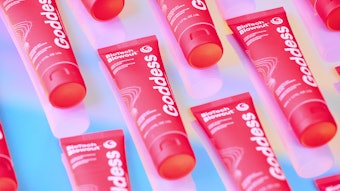
Salmon sperm’s precious polydeoxyribonucleotide (PDRN) content has been the beauty industry's latest star ingredient. While generally embraced for regeneration, anti-inflammation and other skin repair benefits, PDRN has more recently followed the "skinification of hair" charge—particularly launches from KeraFactor and VT Cosmetics. But does the category jump make sense?
Log in to view the full article
Salmon sperm’s precious polydeoxyribonucleotide (PDRN) content has been the beauty industry's latest star ingredient. While generally embraced for regeneration, anti-inflammation and other skin repair benefits, PDRN has more recently followed the "skinification of hair" charge—particularly launches from KeraFactor and VT Cosmetics. But does the category jump make sense?
PDRN: The ‘It’ Ingredient for Tissue Repair and Hair Regrowth
 According to KeraFactor, PDRN is a groundbreaking development in hair restoration and, when paired with peptides, it delivers a multi-targeted approach that "goes beyond hype and into true innovation."KeraFactor
According to KeraFactor, PDRN is a groundbreaking development in hair restoration and, when paired with peptides, it delivers a multi-targeted approach that "goes beyond hype and into true innovation."KeraFactor
Touted benefits, per the company, include:
- Enhanced blood flow: PDRN nourishes hair follicles by stimulating vascular activity.
- Inflammation reduction: It alleviates scalp inflammation, a common contributor to thinning hair.
- Growth activation: Dormant follicles are reactivated, promoting natural hair regrowth.
KeraFactor also adds biomimetic and copper peptides to the PDRN for a comprehensive hair restoration solution. The company reports:
- Biomimetic peptides: Mimic natural signals to stimulate follicle activity, and
- Copper peptides: Strengthen strands and improve scalp health, acting like a "fertilizer" for growth.
According to KeraFactor, PDRN is a groundbreaking development in hair restoration and, when paired with peptides, it delivers a multi-targeted approach that "goes beyond hype and into true innovation."
A Slow Aging Solution for Hair Health
South Korea’s VT Cosmetics also offers a PDRN solution for hair health, positioning the product as a “slow aging solution for the hair."
The brand’s PDRN Reedle Shot Hair Ampoule is a 15 ml treatment designed to revitalize the scalp and strengthen the hair. The formulation comprises its Cica Reedle technology, which “uses micro-sized, naturally derived micro-particulate ingredients to aid absorption and gently stimulate the skin,” per the brand, and vegan PDRN.
The ampoule reportedly promotes scalp elasticity, nourishes weakened areas and enhances rapid absorption for effective results. In addition, it provides daily care to thicken hairlines, cools the scalp instantly, and tightens pores for improved firmness and resilience.
Could PDRN Be the Secret Weapon Against Hair Loss?
Beyond these launches, there is emerging evidence that PDRN can help counteract hair loss, but typically in injection form and in combination with thulium laser therapya. In a 2022 paper in the Chinese Journal of Plastic and Reconstructive Surgery, researchers from the Department of Plastic and Cosmetic Surgery, Tongji Hospital of Tongji University in Shanghai found that those who received the combined therapy experienced improved hair thickness and hair count. Similar benefits were found when combining platelet-rich plasma (PRP) therapy and PDRN.
Innovating Hair Care with PDRN: A Science-Backed Opportunity
For hair care product developers and marketers, the growing interest in PDRN presents a unique opportunity to innovate within the hair restoration and scalp health market.
Leveraging PDRN’s proven benefits—such as tissue repair, inflammation reduction and growth activation—can help create targeted solutions that address common concerns like hair thinning and scalp aging.
Combining PDRN with complementary ingredients like peptides or advanced delivery systems, as seen with KeraFactor and VT Cosmetics, can further enhance product efficacy and consumer appeal.
By staying informed on emerging research and integrating these findings into product development, brands can position themselves at the forefront of this exciting, science-backed trend in hair care.
Footnote
awww.sciencedirect.com/science/article/pii/S2096691122000723










